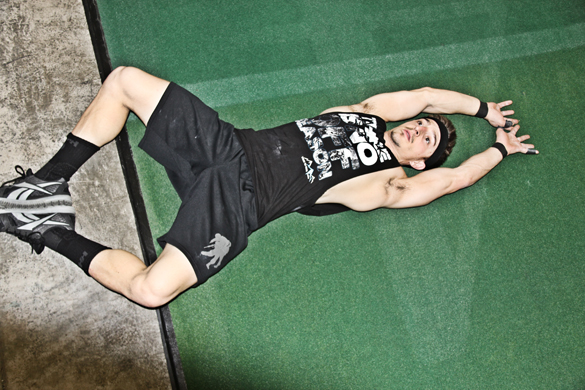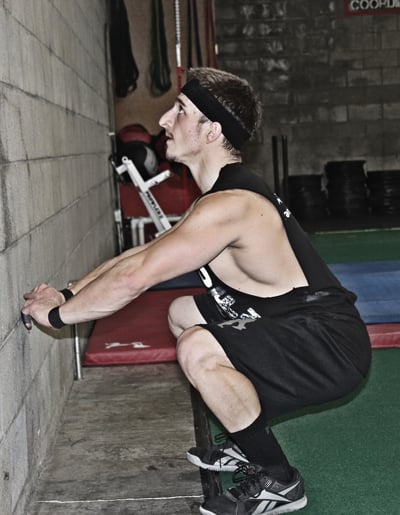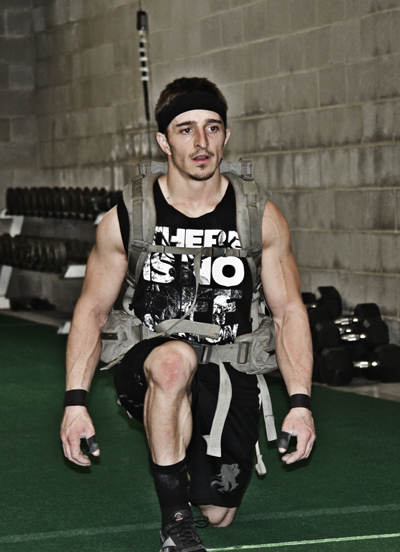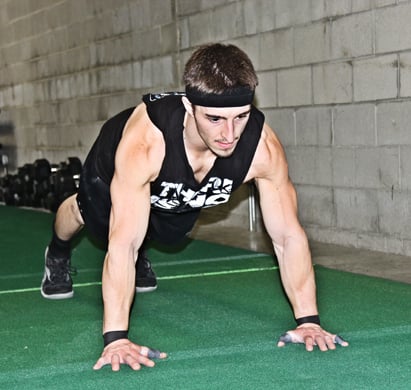LAST UPDATED: May 1st, 2015
Written by Bowhunting.com contributor Dan Staton of TrainToHunt.com
A common thread among all bowhunter’s is the love for a good challenge. Without a doubt the odds are stacked against us while trying to get within bow range of our quarry – and on the animal’s home turf no less! It’s not only a test of your hunting prowess, but I argue it can literally define who you are and what you are made of. The anatomy of a bowhunter to me is made of more than just mile times and body fat percentage. In my humble opinion, it has a great deal more to do with “mindset”. The off-season is the perfect time to begin strengthening not only or bodies, but our minds. So, let’s take a closer look into the physical body and mental resolve of a well-rounded bowhunter.
Physical Hallmarks
Bowhunting boils down the earning a shot opportunity. When this window quickly materializes you hope to execute with control and proper form. It takes perfect practice to create muscle memory, or what I like to call “auto-pilot” mode. Equipment selection plays a roll, but if you ask 10 bowhunters what their set-up looks like you’re going to get 10 different scenarios. Regardless of bow rig or accessories, all bows must be drawn, anchored, centered, and a smoothly released in order to maximize success. However, the one piece of equipment that gets overlooked most often is a body that is ready to “do and perform”…..regardless of the hunting situation.
A strong core is the foundation of good fitness that will pay big dividends in the backcountry. Even treestand hunters can benifit from the stability that comes with a strong mid-section.
A bowhunter’s body is the vessel to navigate the places in which our prey calls home. This could be backcountry or backyard, regardless, physical condition matters. The anatomy of a bowhunter determines how long and alert one can stay in the field. The following physical hallmarks may decide how deep you go and how well you deal with bowhunting adversity this fall.
• Stamina – Exerting yourself and remaining active for a long period of time. This can be related to your resiliency or durability throughout a tough hunt.
• Strength – The ability to produce force. This can be related to pulling, hiking, climbing, posture, and moving external objects like your pack or dragging a harvested animal.
• Endurance – Your ability to resist fatigue over extended periods of time. This can be related to your ability to withstand long consecutive days in the field in harsh conditions.
• Mobility – The absolute range of movement in a joint or series of joints. This can be related to your quality of life and your quality of movements.
• Balance – Your ability to maintain the line of gravity of a body within the base of support. This can be related to any ground you plan on hunting.
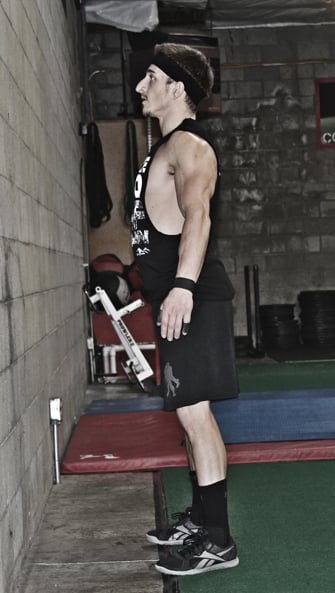
While everyone enjoys a good bench press or arm curl, in the mountains “legs” are king. The complete bowhunter should focus on all aspects of physical fitness and not just the most popular exercises or body parts.
Separation is in the Preparation
Doing something “physical” everyday will tighten the noose and move the needle in the right direction. There’s no magic formula or program that can be prescribed to suite everyone’s need(s). So what should you do to make yourself physically a better bowhunter? Well, the key is to find poise and sharpen all physical hallmarks. Consider that a preponderance of endurance with no strength leaves you weak. Likewise, too much time in the weight room and you’ve handcuffed your endurance. Constantly changing the training stress keeps your body guessing and helps you identify the areas in which you do not excel. Find a weakness, and make it your strength. Here’s a few ways to train each hallmark and better improve your bowhunting anatomy:
Unconventional exercises are great for revealing your “weeknesses” and should be incorporated into your weekly routine. Whatever exercise you choose, try to make sure it mimics some type of movement you will face in the field.
• Stamina – Work on the stamina of your push-up, air squat, and sit-up. Perform 8 rounds of the following interval at each exercise. Rest only 2 minutes between exercises. 20 Seconds of work followed by 10 seconds of rest. The work is twice as long as the rest, the results come from getting comfortable with being uncomfortable. This is known as a “Tabata” interval.
• Strength – Load your pack up to its live weight during a hunt. That pack will weigh somewhere between 20-80lb. Work for 1 minute at each station before resting a full minute. Repeat 3-5 Rounds. Walking lunges, box step-ups, and ground to shoulder. Doing lunges and step-ups with your pack strengthens your relationship; this pack represents your livelihood during a hunt. It has all the necessary items you need to thrive in the animal’s backyard. Lifting your pack from the ground up to your shoulder for a full minute is harder than you think, and it’s something you’ll do in the field repeatedly.
• Endurance – Your pack should stay full of gear year round just for training alone. Put that same pack on and head to the nearest hill, mountain, or stadium. My personal preference is a local high school stadium. Walk up and down stadium stairs for a given amount of time. As the season approaches ad more duration and replace with scouting and hiking.
• Mobility – Not enough can be said for how we lose flexibility and range of motion as we age. No one is immune to the ravages of aging, and mobility is about the easiest hallmark to lose. Attend a Yoga or Pilates class once a week. If you don’t have a studio to attend, search the web for a video to follow or buy a DVD. You don’t have to wear a leotard, but I can guarantee this hallmark pays large dividends.
• Balance – Big mule deer bucks and bulls don’t hang out on flat or level ground. The topography of most hunting grounds call for balance, accuracy, and agility. I know personally that there are numerous deadfalls to maneuver, endless creeks to hop across, and even the tree stand bowhunter knows that better balance is crucial for a steadier shot. To work on balance, attend that Yogo/Pilates class previously mentioned, sub in on a pick-up basketball game, or join a recreational league for soccer or flag football. Having fun and improving balance at the same time is a must; not a “should”.
The Mind is Primary
My personal bowhunting adventures imitate some of life’s best curve balls; testing
what I’m made of and taxing my mental strength. It is important to understand that mental toughness is born of adversity; that it will atrophy if not consistently engaged; and that it carries over to everything you do. Deny thyself daily and push through a handful of things each day that you don’t want to do and you will grow; as a bowhunter and a person. What I’m about to tell you will probably help both your training and your bowhunting so grab a pencil. On one side of your card list your personal keys to success; on the other, your performance keys to success. Keep this card handy and study it often.
Those individuals who push back when life (or a bowhunting adventure) pushes them typically come out on top; with filled tags and a life more lived.
For example:
Personal Keys to Success
• Discipline
• Work Ethic
• Perfect Practice
• Determination
Performance Keys
• Belief In Myself
• Top Tier Focus
• Unwavering Desire
Learning to use your mind is critical in both training bouts and bowhunting adventures. Our actions follow our thoughts and images. This means to only look where you want to go, block out the negative.
Imagery
Imagery is the formation of mental images or likenesses of things collectively. In other words, viewing your mental camera and seeing yourself through a process with the mind’s eye. Before you go on your next adventure, visualize the smell of the mountain air and remember how much fun it is to wake up hours before first light; feel and see all of the anticipation. Fast-forward through the hike from camp, recall your greatest prior moments of triumph, your best stalks, and your best shots. See yourself pulling back on the trophy of a lifetime, taking some awesome recovery pictures behind the rising sun. Run through your own personal slide show of positive images.
Creating your own “mind workout” is easy and can be done when you are tired, mowing the lawn, the seasons is closed, or if you’re injured. Make your images clear and vivid; see yourself overcoming mistakes and imagine yourself doing things well. Confidence comes from knowing you are mentally and physically prepared.
When combined with a solid shooting routine and good scouting, physical and mental fitness are the final pieces of the puzzle that will put more trophy’s on your wall and memeories in your head.
The C’s of a Bowhunter
• Competitive – A competitor will find a way to win. This means taking the bad breaks and using them to drive yourself that much harder. Quitters take bad breaks and use them as reasons to give up.
• Confidence – Confident bowhunters have a “can-do” attitude, a belief they can handle whatever comes their way. This means never succumb to self-defeating thoughts.
• Control – The hallmark of mentally tough bowhunters is the ability to maintain poise, concentration, and emotional control under the greatest pressure and the most challenging situations.
• Committed – Be self-directed and highly motivated, want it more than the next guy, and put in the time and energy to achieve your goals.
• Composure – Keeping your cool when facing adversity
A physically and mentally fit individual is the cornerstone of bowhunting. The nuts and bolts of our being starts with the mind. When we train our mind we have no problem training our body. This deadly combination enables us to rise to the occasion and tackle challenges head on. Each day is a gift, and we are lucky to call ourselves bowhunters. Make your anatomy, both mind and body that of a bowhunter.

